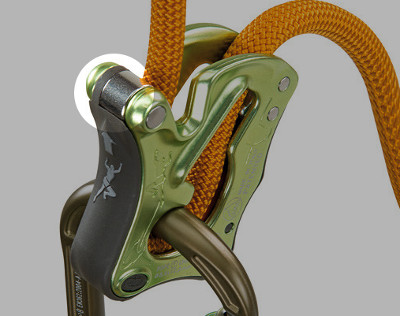I am regularly using the Click-Up belay device from Climbing Technologies together with a 40-meters rope from Edelrid I bought recently.
Now, after using the two only about 10 times together (always indoors) I noticed that there is abnormally strong wear on the rope but only on the second half, i.e. the part of the rope that is needed when lowering the climber.
Therefore, I am wondering if anybody else has observed something like this? Or whether it might be related to edges highlighted in the picture below?

The edges don't seem to be extremely sharp but the only thing I can imagine that could cause this problem, in particular because when lowering the other climber and pushing the rope over to the left (so that it's running over the dark gray plastic part), I see pilling (from the rope) is collecting there.
Some additional information:
- The rope is 9.8 mm in diameter (it's the Edelrid Freedom), so within the recommended range given by the manufacturer (8.6 - 10.5 mm).
- There is some wear on the caribiner but it doesn't really have sharp edges.
- My (very subjective) definition of "abnormally strong wear" is based on other people being surprised by the wear of my rope in comparison to theirs (made by different manufacturers and used with different belay devices), and on my feeling that after 10 times (some 30-40 hours) a rope shouldn't look like one long toothbrush...
- We both are rather lightweight (~ 65 kg).
Here's some photos to illustrate what I mean:
- Part of the rope that shows strong wear

- The first meters still look good as new (this is the same rope although the color seems different in the photos...)

- The carabiner (which belongs to the Click-up and is a few years older than the rope) has some dents which could be related...

- And finally, this is what is looks like after lowering somebody.

abnormally strong wear on the rope, are you comparing it to another belay device you're familiar with?